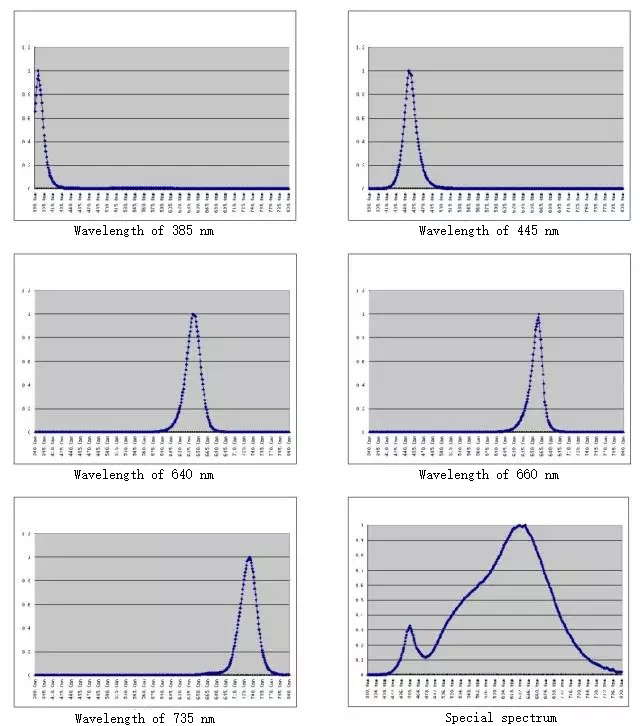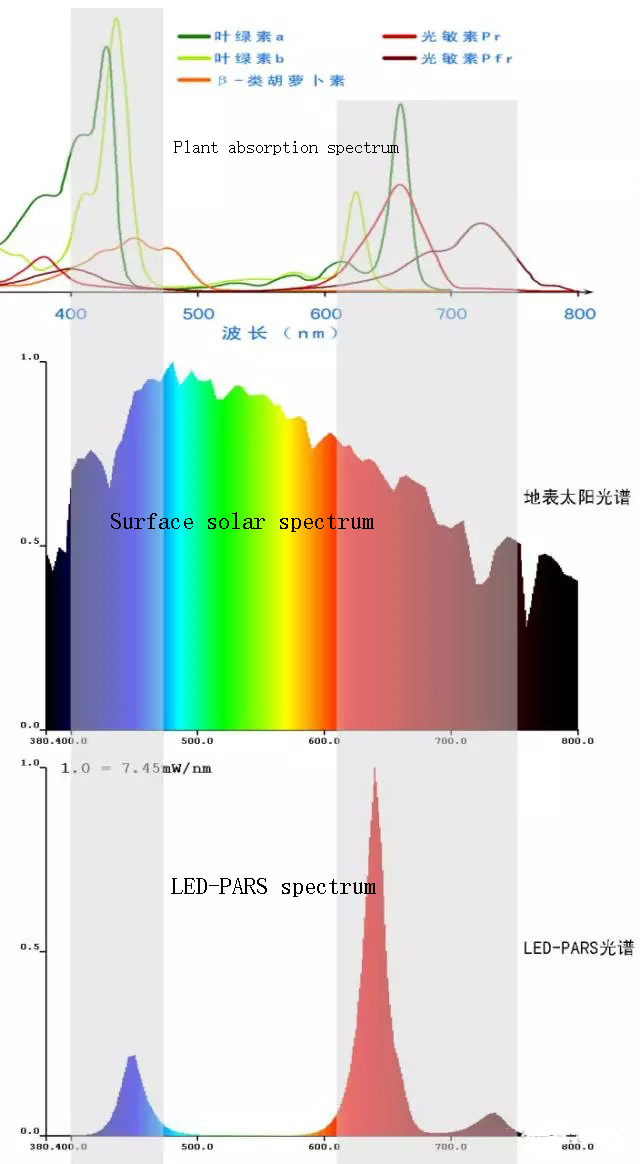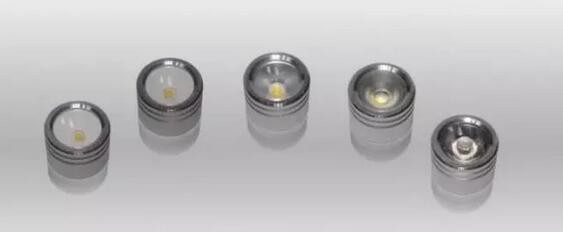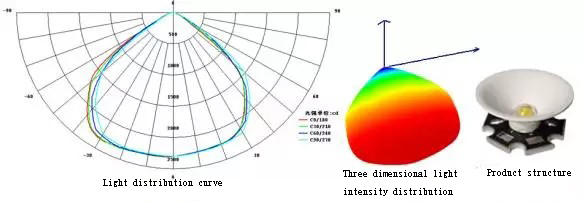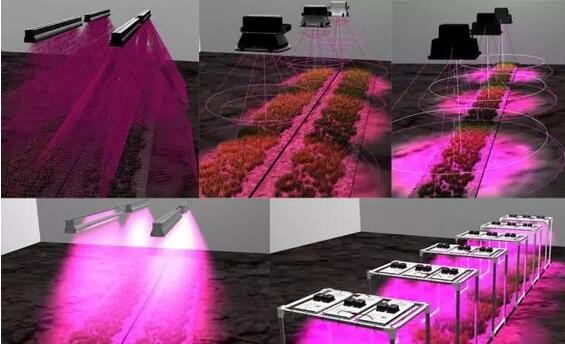Reverse Plant Growth - How Amazing Is The LED Grow Light
Writer:Jane Time:2021-06-19 Browse:174
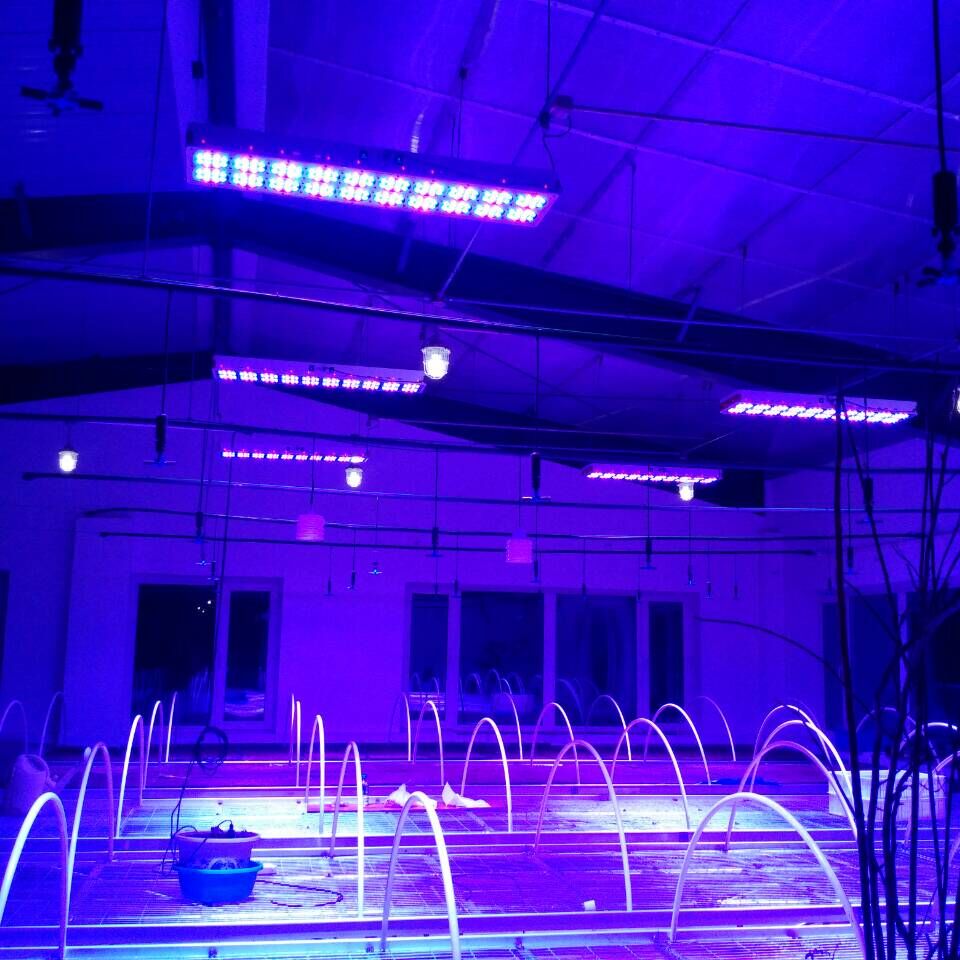 Plant illumination, in recent years lighting industry is more and more a vocabulary of fire. As an artificial light source for plant growth, the development of LED grow light is closely related to the commercialization of plant factories. In recent years, thanks to the acceleration of plant factory commercialization, domestic LED plant lighting has developed rapidly.
Plant illumination, in recent years lighting industry is more and more a vocabulary of fire. As an artificial light source for plant growth, the development of LED grow light is closely related to the commercialization of plant factories. In recent years, thanks to the acceleration of plant factory commercialization, domestic LED plant lighting has developed rapidly.
Today, plant lighting is widely used in plant factories, plant landscape and breeding lighting, and the main market at present is plant factories. In a plant factory, everything grows by light. You just need to figure out the needs of different plants for water, light and fertilizer, and you can customize the growth conditions to break the regional and seasonal restrictions. As long as the temperature, light and other factors are appropriate, you can eat watermelon in winter and persimmon in summer.
Last time, we discussed the mechanism and characteristics of plant lighting. This time, we will delve into the secrets of LED plant lighting.
What is the LED?
LED is the English abbreviation of Light Emitting Diode, which belongs to semiconductor devices. LED began to be applied in 1962. Before 1993,LED only had red, green and yellow Light devices, mainly used as indicator Light, and blue LED in 1993 With the realization of industrial production, the application of four-element red LED and blue LED in plant planting has gradually developed. The application of LED in the field of Lighting is called Solid State Lighting SSL(Solid State Lighting), and the application of LED in plant planting is called Artificial Radiation Source PARS(LED) Plant Artificial Radiation Sources).
LED for plant planting has the following characteristics:
1. Artificial radiation sources with different wavelength combinations can be made.
2. High conversion efficiency of electric power to radiant power.
3. LED belongs to the cold light source, the light emitted by no thermal radiation.
4. single-side luminous mode, the highest utilization rate of light radiation.
5. The output of radiation can be adjusted by driving current.
6. radiation attenuation rate is low, the average life of more than 30,000 hours.
7. low power consumption, low planting cost.
8. can be driven by low voltage DC, can achieve digital scale control.
9. Convenient access to solar and wind power supply systems.
10. The production process of LED devices will not cause environmental pollution.
11. the product cost is high, the initial investment is large.
LED spectrograms for plant photosynthesis
For the development of plant lamp, we are based on the solar radiation and plant photosynthesis system. Therefore, for LED light source, it is also necessary to start from the spectral analysis of LED. Figure 1 is the spectrogram of the commonly used wavelengths of LED plant lamps. It can be seen that in the spectrum of each wavelength, the waveform is single and smooth, without other clutter, and the wave morphology is close to the peak wavelength morphology of plant photosynthesis, which can provide a combination of multi-bands.
Figure 1: Spectral view of LEDs of various wavelengths
In view of the different plants, according to the characteristics of the absorption spectra, the different wavelength of the LED proportional combination together, form a multiband artificial radiation source, wavelength size is associated with plant species, the composition and amount of different wavelength of LED radiation energy associated with the radiation characteristics of LED itself, LED radiation efficiency related to the quality of the assembly house, need professional into the instrument Physical analysis is required to determine the ratio combination.
Figure 2 is the spectral contrast diagram of LED plant lamp. It can be seen from the figure that the spectral pattern of LED plant lamp is close to that of plant pigment absorption spectrum, but LED plant lamp cannot imitate pigment absorption spectrum, which needs to refer to the Moakley curve and scientific experiments.
Figure 2: Comparison between LED plant lamp and pigment spectrogram
Some technical requirements of LED plant lamp
The key technologies for LED plant light are structural heat dissipation and secondary optical design. For other aspects, please refer to "How to Design the Spectrum of LED Plant Light". The article. Here, just introduce our design plant lamp technical support.
At present, the heat dissipation technology of lamps and lanterns has been relatively mature. The heat dissipation bracket in the lamps and lanterns can be equipped with reflective cups and lenses to achieve a variety of optical output angles. At the same time, it also has the ability of anti-static, so that the life of products can be fundamentally guaranteed. Figure 3 shows the cooling bracket with various light output angles.
Figure 3: Radiating bracket with various light output angles
In terms of radiation efficiency, the reflective surface of the reflecting cup is coated with special reflective coating, which greatly improves the output efficiency of light. At the same time, by means of optical design, the light intensity of the reflection center and the edge tends to be uniform, and the radiation uniformity of the radiation surface is greatly improved. As shown in Figure 4, a reasonable optical design generates the most suitable light distribution curve for plant growth.
Figure 4: Secondary optical design
In the aspect of product application evaluation, it is generally necessary to do simulation simulation through simulation technology before product development, and analyze the light distribution data and effect of product application in advance. Figure 5 is a graphical representation of these analyses.
Figure 5: Industrial simulation techniques for design effects
Figure: Simulation and product application
The final design goal of artificial plant radiation source is to achieve low energy consumption and high efficiency of plant planting. Therefore, the design process of grow light is much more complex than the design process of lighting products. First, we need to understand the requirements of planting technology, and the greenhouse application needs to test the planting environment DLI, the spectral morphology and secondary optical design of plant lamp need professional design, and the design of plant lamp depends on design experience and technical support ability.
At present, the grow light spectrum of design quality and quantity of light are belongs to the content of enterprise relative secrecy, so that the light of the specific quality and quantity of light application and there is no too much description, can have such a consensus: the enterprise need to the market to profit, must have the technical service and technical ability, plant light spectrum is easy to crack, but not in the realm of crack technical service and technical ability, only their own With excellent technology, marketing can be guaranteed. Plant lamp in the planting process is only one of the conditions, not the only plant lamp only in line with the requirements of the planting process, in order to play the best effect. Plant illumination, in recent years lighting industry is more and more a vocabulary of fire. As an artificial light source for plant growth, the development of LED grow light is closely related to the commercialization of plant factories. In recent years, thanks to the acceleration of plant factory commercialization, domestic LED plant lighting has developed rapidly.
Plant illumination, in recent years lighting industry is more and more a vocabulary of fire. As an artificial light source for plant growth, the development of LED grow light is closely related to the commercialization of plant factories. In recent years, thanks to the acceleration of plant factory commercialization, domestic LED plant lighting has developed rapidly.
